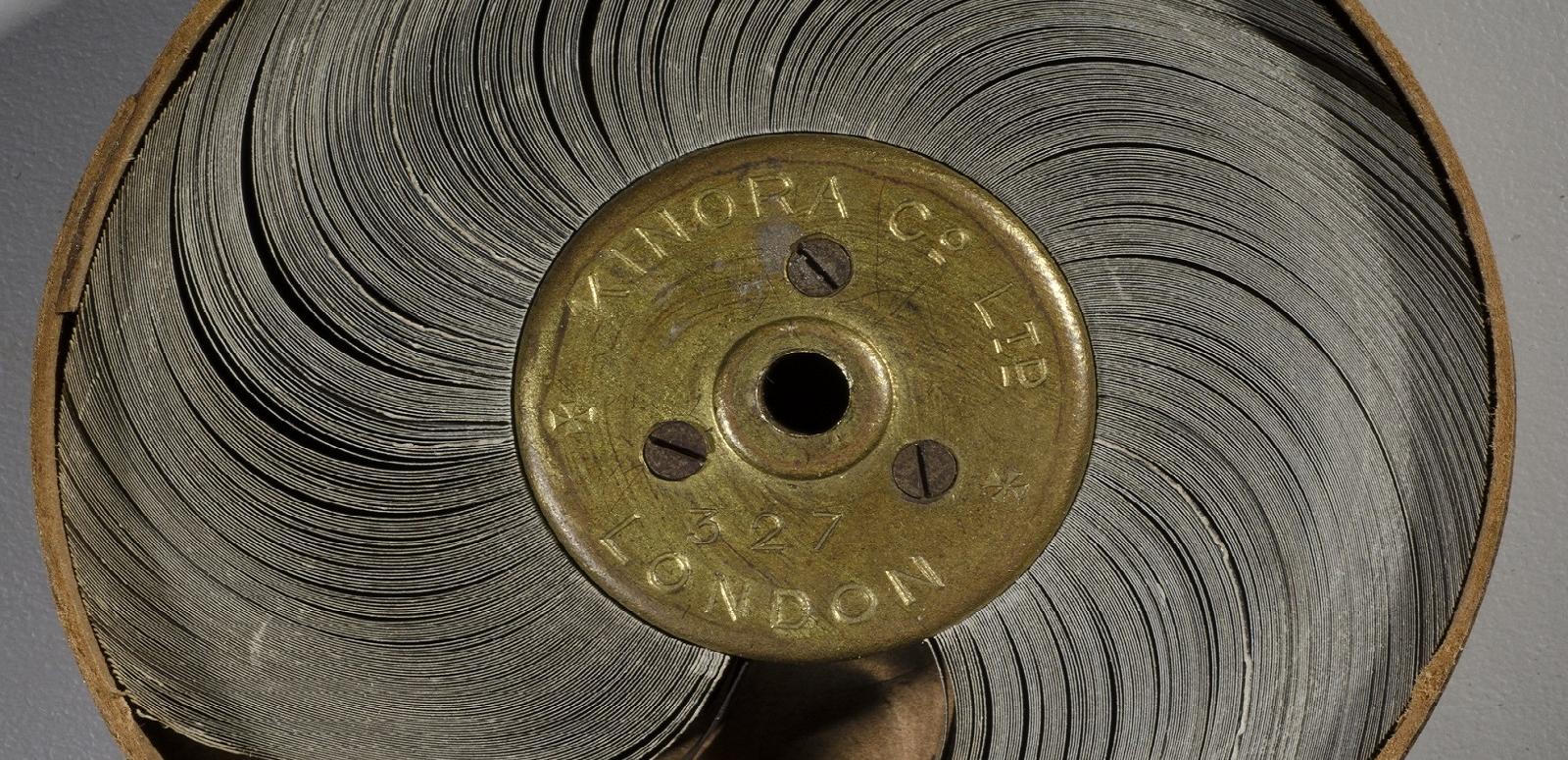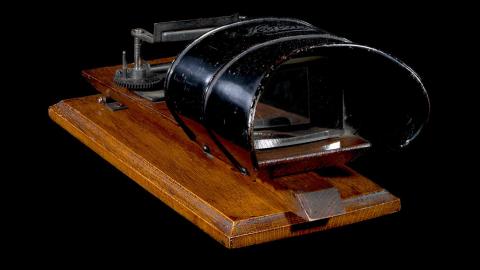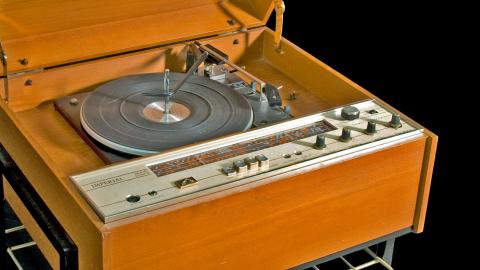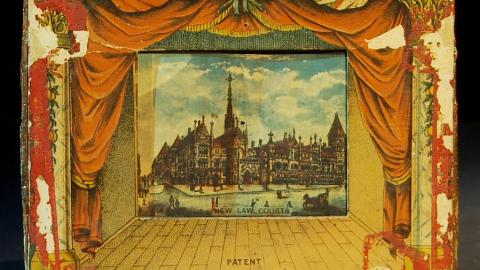The NFSA recently received a donation from cricket historian Glenn Gibson: a reel for the earliest home entertainment system ever produced, the Kinora. The only problem was that even though we had six other Kinora reels in the collection, we did not have a player. They are extremely rare!
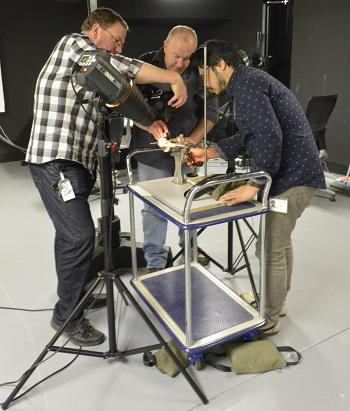
The Kinora system works using the same principle as a flipbook, displaying one still image after the other to create the illusion of movement. Instead of being printed on the pages of a book that the user flips manually, Kinora's mechanical system allowed for a much higher image quality. The photos were printed on a reel which was placed in a player, and the user turned a crank handle to view the images.
Kinora reels ran for a maximum of 30 seconds and could be purchased or rented for home use. Topics that could be viewed ranged from everyday activities to historical events, as well as moving images of sportspeople and entertainers of the day. Reels of family members could also be made at photographic studios, and from 1908 a camera was available for people to purchase and make their own Kinora home movies. As the popularity of cinema increased, interest in Kinoras waned. Following a factory fire in 1914, Kinora ceased production.

